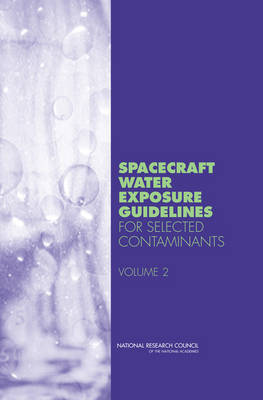The International Space Station is a closed and complex environment, so some contamination of its internal atmosphere and water system is expected. To protect space crews from contaminants in potable and hygiene water, the National Aeronautics and Space Administration (NASA) requested that the National Research Council (NRC) provide guidance on how to develop water exposure guidelines and review NASAa (TM)s development of the exposure guidelines for specific chemicals. NASA selects water contaminants for which spacecraft water exposure guidelines (SWEGs) will be established; this involves identifying toxicity effects relevant to astronauts and calculating exposure concentrations on the basis of those end points. SWEGs are established for exposures of 1, 10, 100, and 1,000 days. This report is the second volume in the series, Spacecraft Water Exposure Guidelines for Selected Chemicals. SWEG reports for acetone, alkylamines, ammonia, barium, cadmium, caprolactam, formate, formaldehyde, manganese, total organic carbon, and zinc are included in this report.
The committee concludes that the SWEGs developed for these chemicals are scientifically valid based on the data reviewed by NASA and are consistent with the NRC (2000) report, Methods for Developing Spacecraft Water Exposure Guidelines. SWEG reports for additional chemicals will be presented in a subsequent volume.
- ISBN10 0309103797
- ISBN13 9780309103794
- Publish Date 2 May 2007 (first published 1 January 2007)
- Publish Status Active
- Publish Country US
- Imprint National Academies Press
- Format Paperback
- Pages 534
- Language English
